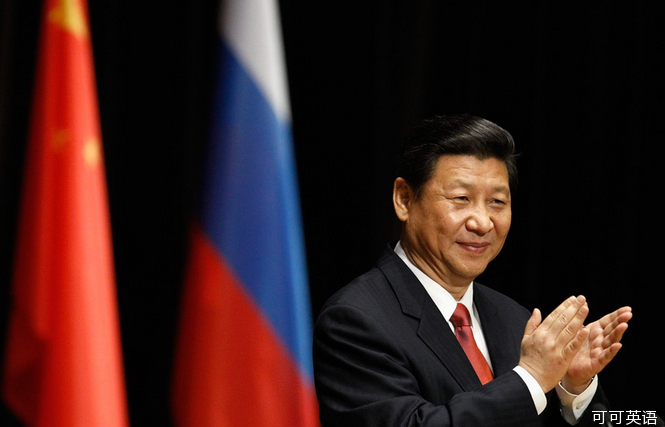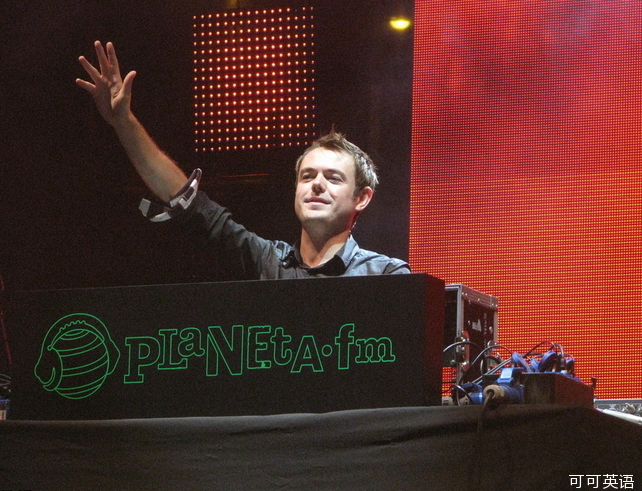(单词翻译:单击)

Maybe it's the speed-of-light pace of technology, or the stress of having too much to do and not enough time to do it, or both, but when British bank Lloyds TSB set out to study what causes careless (and costly) household accidents, the researchers made an interesting discovery: The average adult attention span has plummeted from 12 minutes a decade ago to just 5 minutes now. That may be especially true at this time of year, when most of us would rather be at the beach.
到底是什么导致了粗心(且成本高昂)的家务事故?是科技的快速进步,还是因为有太多事情要做但却没有足够的时间?抑或两者皆有?为了探明究竟,英国银行劳埃德TSB集团(Lloyds TSB)进行了一项研究,结果有了一个有趣的发现:成年人的平均注意力持续时间从十年前的12分钟已经缩短到现在仅有5分钟。每年到了现在这个季节尤其如此,因为我们大多数人宁愿待在海滩上。
So there you are, planning a presentation that could have a big impact on your career, for better or worse, and it's half an hour long. "With an attention span of five minutes, the average audience is going to tune out 84% of your 30-minute speech," says Sean O'Brien -- unless, that is, you find ways to keep them interested.
假如你正在规划一次至关重要的陈述,它可能会决定你的职业生涯未来是向着更好的方向还是更坏的方向发展,而陈述的时间是半个小时。西恩•奥布莱恩说:“因为听众平均注意力持续时间只有5分钟,所以在30分钟的演讲期间,听众有84%的时间是在走神。”——除非,你能找到保持听众注意力的方法。
An executive vice president at Atlanta-based online meeting and collaboration firm PGi, O'Brien offers these suggestions for doing just that. They're drawn from a new PGi e-book (free on the company's website) called The Little Black Book of Presentation Ideas.
奥布莱恩是亚特兰大一家在线会议与合作公司PGi的执行副总裁。他将为读者提供一些吸引听众注意力的建议。这些建议来自PGi的一本新电子书(可在该公司网站上免费下载)——《讲演妙招黑皮书》(The Little Black Book of Presentation Ideas)

1. Are you sure you need PowerPoint? "People fall back on PowerPoint because it's easy and familiar," O'Brien notes. "The trouble is, it doesn't stand out. The audience has seen the same format 1,000 times, so they turn into zombies." Alternatives like Prezi, Easel.y, or SlideRocket "are designed to be easy to use, and they can make more of a visual impact.
1. 你确定要用幻灯片吗?奥布莱恩说:“人们往往会求助于PowerPoint,因为它简单且很常见。可问题在于,幻灯片不会让你脱颖而出。同一种格式,观众们可能看过不下一千次,所以他们对幻灯片已经麻木了。”Prezi、Easel.y或者SlideRocket等替代工具不仅易于使用,而且可以提供更多的视觉效果。
"But maybe you don't need slides at all. Sometimes they're just a crutch," he adds. O'Brien likes to quote Steve Jobs, who said, "People who know what they're talking about don't need PowerPoint." He also cites research showing that 41% of U.S. employees would rather do their taxes or go to the dentist than sit through a slideshow -- and 62% have either fallen asleep or left the room to escape a boring batch of slides.
他补充说:“或许,你根本就不需要使用幻灯片。有时候,幻灯片只是作为一种精神依靠。”奥布莱恩喜欢引用史蒂夫•乔布斯的话。乔布斯曾说过:“知道自己在说什么的人根本不需要PowerPoint。”此外,他引用的调查数据显示,41%的美国员工宁愿去缴税或看牙医,也不愿意等着幻灯片放完——62%的美国员工为了逃避冗长无聊的幻灯片,曾经打过瞌睡,甚至干脆离开会议室。

2. If you do use slides, less is more. Start with "a killer first slide or opening remark," O'Brien says, "with eye-catching visuals and concise language." Then, for a 30-minute presentation, plan on no more than five to 10 slides. "If you have a slide deck with 30 slides in it, your presentation is doomed," O'Brien says. "You also need to have each slide make just one main point of 15 words or fewer." Talk too much and you'll lose 'em, so get to the point.
2. 如果确实需要幻灯片,越少越好。奥布莱恩说:“第一张幻灯片或开场白一定要能让人兴奋,要使用一些能吸引眼球的视觉效果和简练的语言。”30分钟的陈述不要使用超过五到十张幻灯片。奥布莱恩说:“如果你硬是要在三十分钟里放30张幻灯片,那你的陈述注定不会成功。此外,每一张幻灯片上只需要列出一条要点,字数不能超过15个单词。”滔滔不绝地说太多,听众会失去兴趣,所以一定要简明扼要,突出主题。

3. Make smart use of unusual fonts and colors. Varying your visuals with different fonts, beyond the mainstream Microsoft Office and Keynote typefaces, can help you hold people's interest, and they're readily available from sites like Dafont, 1001 Free Fonts, Fontsbytes, and Fonts.com. "Don't forget to give your text room to breathe," O'Brien adds. "It should be big enough to be read from the back of the room."
3. 巧妙使用不常见的字体和颜色。使用Microsoft Office和Keynote主流字体之外的其他字体,增加幻灯片的视觉效果,可以吸引听众的注意力,Dafont、1001 Free Fonts、Fontsbytes和Fonts.com等网站都提供各种字体的下载。奥布莱恩补充道:“别忘了让文字之间的间距更开阔。文字的大小应该确保站在房间后面的人也能看清楚。”
Color counts too. O'Brien notes that product marketers and interior designers rely on color to evoke different responses -- red denotes power and urgency, blue is calming, orange conveys energy and enthusiasm, and so on -- and you can do the same: "Give the colors in your presentation some thought. Often people get so focused on the factual content that they forget to consider the visual impact."
颜色也很重要。奥布莱恩发现,产品营销人员和室内设计师会依靠颜色来激发不同的反应——红色代表了权力和紧迫性,蓝色代表冷静,橘色代表能量与激情。你同样可以利用颜色:“赋予陈述中所使用的颜色一定的内涵。人们通常过于关注事实内容,结果忘记考虑视觉效果。”

4. It's not all about the work. "The best presentations draw people in and make an emotional connection between the speaker and the audience," says O'Brien. "You'll be much more engaging and memorable if you tell a funny story or share a favorite quote, talk a bit about yourself and reveal a little of who you are outside the office."
4. 不要只谈工作。“最出色的陈述能让听众沉浸其中,在演讲者与听众之间建立一种情感上的联系,”奥布莱恩说。“如果你讲一个有趣的故事,或者分享一句最喜欢的名言,谈一谈一下自己,展示一下办公室之外的自己是什么样子,会令你更具有吸引力,给听众留下更深的印象。”
You don't want to overdo this, of course, but handled right, it can be riveting. For proof, check out Sheryl Sandberg's famous 2010 TED talk (the one that led to her writing Lean In). Sandberg's frankness and self-deprecating humor carries it -- and without a PowerPoint slide in sight.
当然,一定要掌握分寸,只要处理得当,一定能吸引听众注意。谢丽尔•桑德伯格著名的2010年TED演讲【(正是这次演讲让她决定写《向前一步》(Lean In)这本书】就是最好的证据。桑德伯格的坦率和自嘲式的幽默给所有人留下了深刻印象——而她在演讲过程中没有使用任何幻灯片。

5. Break through the "fourth wall." Ever take a course in college where you never knew when the instructor was going to call on you, out of the blue, and expect some intelligent comment? It's a time-honored technique for keeping an audience on its toes, since no one wants to be caught napping (literally or metaphorically), and it works for speeches, too.
5. 突破“第四面墙”。你有没有过这样的经历——在大学上课,不知道导师什么时候会突然点到你的名字,希望你能给出一些聪明的评论?这种历史悠久的技巧可以让听众时刻保持紧张,因为没有人希望在毫无防备的情况下被抓突然提问,这种技巧同样适用于演讲。
"Involve your listeners by encouraging constructive interruptions, like questions," O'Brien suggests. "Or pick people in the audience at random, and ask them to weigh in."
奥布莱恩建议:“通过鼓励听众建设性地打断演讲,比如提出问题等,让听众参与其中。或随机挑选听众,邀请他们参与讨论。”
Some expert speakers, like former GE (GE) chief Jack Welch, have made use of Twitter to let audience members Tweet a constant stream of questions and comments, which Welch then addresses in real time. It's not a technique for the faint of heart, but it does keep people's attention from wandering. These days, that's no small feat.
有一些演讲大师,比如前通用电气(GE)首席执行官杰克•韦尔奇,会利用Twitter,让听众们提出问题和评论,韦尔奇会实时进行解答。这种技巧不适合胆小的人,但确实能让听众们集中注意力。这在当今可谓是不小的壮举。


